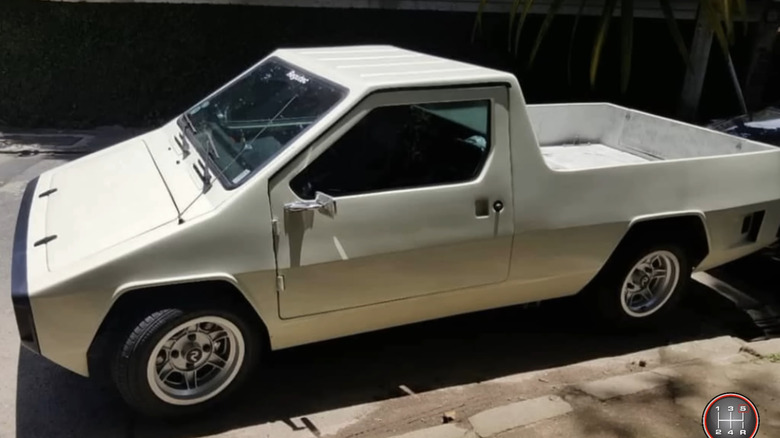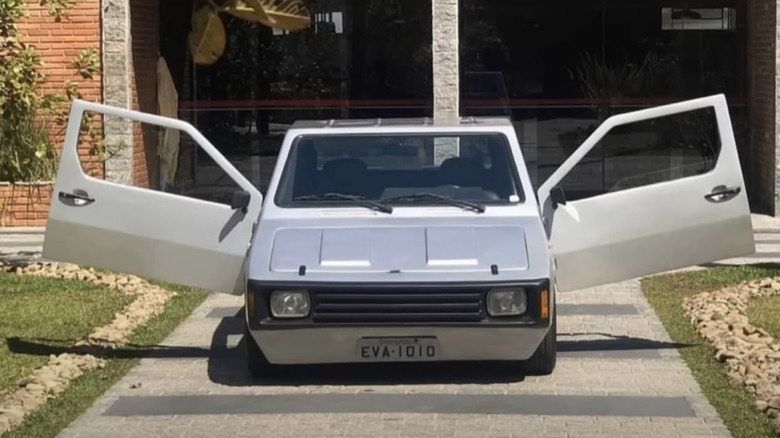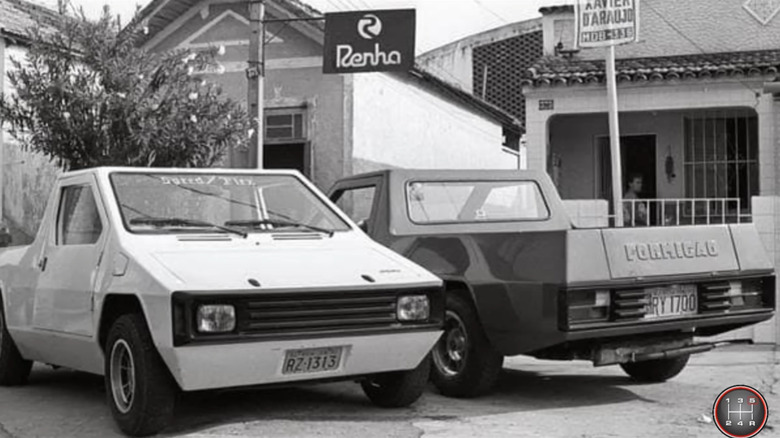The Old, Forgotten Pickup That Looks Like Cybertruck's Grandfather
With a design that makes it look out of place parked next to anything other than a Falcon Heavy rocket, the recently unveiled Tesla Cybertruck is not a vehicle for introverts. Its sharp lines and angular details leave you in no doubt about what you have laid eyes on, but for some people, it may not be the first time they've seen a pickup this shape drive down the road.
The Renha Formigao (later called the Coyote), a small-series classic Volkswagen Beetle-based pickup, is the first cyber-looking truck to enter production, albeit very limited production, starting in 1979. It was the brainchild of Paulo Renha, a Brazilian powerboat builder who tried his hand at making Volkswagen-branded road vehicles.
He first launched a trike with a Beetle engine, then a tiny pickup truck that perfectly fit onto a Beetle chassis. The running gear was standard and unmodified, but the squared-off body he put on it made it look extremely unusual, even in the 1980s — the age when angular automotive design peaked.
Surprising Design Similarities
Even if the Formigao is a fraction of the size of a Cybertruck, the overall shape of the two trucks is surprisingly similar. The Formigao has an almost flat front where the hood and the windscreen look like they're sitting in the same plane, and this lends the vehicle a recognizable Cybertruckesque look.
The wheel wells are about the same shape in both vehicles, although they are not alone in sporting this design, as it was a common cue among square 1980s vehicles with statement styling. But between this, the similar general aesthetic, and the fact that they are both pickups, you really can call the Formigao a distant forebearer of the flashy new electric pickup.
Had the Formigao been a slightly bigger truck, with a larger dual-cab design that could fit two rows of seats and a roofline that was slanted toward the back, we would have called its resemblance to the Cybertruck uncanny. But since it's such a petit truck with a single cab and a tiny bed, it looks like a toy compared to the modern EV.
The Formigao's body is made of fiberglass, so it needs to be painted a metallic-looking shade of silver for it to match the Cybertruck's bare-metal finish.
The Practical Stuff
The Renha Formigao had a design that marked it out as a unique and different vehicle, and its interior was considerably more upscale than what you would see in a period Volkswagen Beetle. It had sporty-looking leather seats and a small, thick-rimmed, three-prong steering wheel that looked like it belonged in a Group B rally car.
Its performance was modest, with its 1.6-liter Volkswagen bus engine still hanging out over the rear axle as it did in the donor Beetle. With just 58 horsepower on tap, the Formigao offered better performance than you might think, thanks to its very low weight of just 1,666 pounds (756 kilograms).
It was also more than just a design statement, as it was intended to carry loads of up to 1,433 pounds (650 kilograms) in its bed, which had a maximum load volume of 25 cubic feet. It's unclear what Formigaos were used for or how many were made for that matter, but it remains a cool page of automotive design history.


